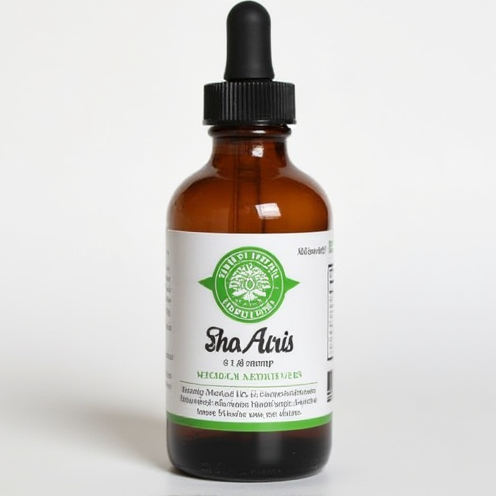Admol Drop
Product Info
| Prescription required | No |
| Marketer | Kepler Health Care |
| Active Ingredient | Paracetamol (100mg/ml) |
| Salt Synonyms | Acetaminophen |
| Storage | Store below 25°C |
| Chemical Class | P-Aminophenol Derivative |
| Habit Forming | No |
| Therapeutic Class | PAIN ANALGESICS |
| Action Class | Analgesic & Antipyretic-PCM |
| User Rating | 5.0 |
| User Reviews | 341 |
FAQ






















Admol Drop Reviews
Admol is given orally preferably at a fixed time every day. Though this medicine can be taken before or after food, it is best given after food as it can irritate the inner lining of an empty stomach. The dose and duration will depend upon your child’s age, body weight, and severity of the infection, so stick to the dose, time, and way prescribed by your child’s doctor. If your child vomits within 30 minutes of taking the medicine, let the child calm down and repeat the same dose. Redosing is not recommended if your child vomits more than 30 minutes after taking a dose.
Do not give your child Admol along with other medicines (many cold and flu medicines and other painkillers) that contain paracetamol, as this may result in overdosing and cause dangerous side effects such as hepatotoxicity (liver damage). Always check the ingredients of any other medicines before giving them to your child in combination with this medicine.
Generally, this medicine is well-tolerated by the children. However, temporary side effects such as indigestion, nausea, and vomiting may occur in some children. Consult your doctor in case these episodes become bothersome for your child.
This medicine is often considered safe and effective but may not be suitable for everybody. Inform your doctor if your child is undergoing treatment for any blood-related disorder, is allergic to any medicinal compound, or has any birth defects, liver impairment, or kidney dysfunction. This will help your child’s doctor evaluate the dose and suitability of this medicine in a better way.
How Admol Drop Works
How to Use Admol Drop
Benefits of Admol Drop
- In Treatment of Fever: Admol is also used to reduce a high temperature (fever). It works by blocking the release of certain chemical messengers that cause fever. It may be prescribed alone or in combination with another medicine. You should take it regularly as advised by your doctor.
- In Pain relief: Admol is a common painkiller used to treat aches and pains. It works by blocking chemical messengers in the brain that tell us we have pain. It is effective in relieving pain caused by headache, migraine, nerve pain, toothache, sore throat, period (menstrual) pains, arthritis, and muscle aches. This medicine is very widely used and very rarely causes side effects if taken at the right dosage. Take it as it is prescribed to get the most benefit. Do not take more or for longer than needed as that can be dangerous. In general, you should take the lowest dose that works, for the shortest possible time. It is also the first choice of painkiller during pregnancy or breastfeeding.
Uses of Admol Drop
- Pain relief
- Treatment of Fever
Admol Drop Side Effects

Safety Tips
Quick Tips
- If Admol does not seem to be helping your child, contact your doctor for advice. Do not give extra doses.
- Inform the doctor if your child has liver disease as the dose may need to be adjusted.
- Never give any other medicine formulation containing paracetamol along with this medicine as that may lead to serious side effects.
- Your child should not take more than four doses of this medicine in 24 hours, so wait up to 6 hours between doses.
- Give Admol to your child with food or milk to prevent an upset stomach.
References
- Furst DE, Ulrich RW, Varkey-Altamirano C. Nonsteroidal Anti-Inflammatory Drugs, Disease Modifying Antirheumatic Drugs, Nonopioids Analgesics, & Drugs Used in Gout. In: Katzung BG, Masters SB, Trevor AJ, editors. Basic and Clinical Pharmacology. 11th ed. New Delhi, India: Tata McGraw Hill Education Private Limited; 2009. pp. 635-36.
- Grosser T, Smyth E, FitzGerald G. Pharmacotherapy of Inflammation, Fever, Pain, and Gout. In: Brunton LL, Hilal-Dandan R, Knollmann BC (Editors). Goodman & Gilman's: The Pharmacological Basis of Therapeutics. 13th ed. New York, New York: McGraw-Hill Medical; 2018.
- MedlinePlus. Acetaminophen.
- Aabideen K, Moulton LS, Sills J. Accidental staggered paracetamol overdose: An interesting case report. J Pharmacol Pharmacother. 2011;2(3):189-190.
- Paracetamol [EMC Patient Leaflet]. Leeds, UK: Rosemont Pharmaceuticals Limited; 2019.
- Section on Clinical Pharmacology and Therapeutics; Committee on Drugs, Sullivan JE, Farrar HC. Fever and antipyretic use in children. Pediatrics. 2011;127(3):580-7.
- Royal College of Paediatrics and Child Health. Medicines for Children - information for parents and carers.
- Grosser T, Smyth E, FitzGerald GA. Anti-Inflammatory, Antipyretic, and Analgesic Agents; Pharmacotherapy of Gout. In: Brunton LL, Chabner BA, Knollmann BC, editors. Goodman & Gilman’s: The Pharmacological Basis of Therapeutics. 12th ed. New York, New York: McGraw-Hill Medical; 2011. pp. 982-84.
- Children’s Health Queensland Hospital and Health Service. Emergency care of children: Medication guides for use in Queensland.
